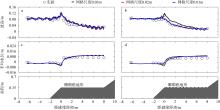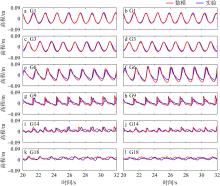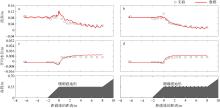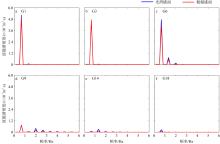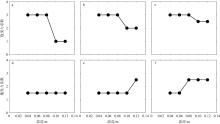| [1] |
贾美军, 姚宇, 何天城, 等, 2020. 大糙率礁面影响下珊瑚礁海岸附近规则波演化及爬高试验研究[J]. 海洋与湖沼, 51(6): 1344-1349.
|
|
JIA MEIJUN, YAO YU, HE TIANCHENG, et al, 2020. A flume study of regular wave transformation and Run-up around reef coasts with large surface roughness[J]. Oceanologia et Limnologia Sinica, 51(6): 1344-1349 (in Chinese with English abstract).
|
| [2] |
姚宇, 2019. 珊瑚礁海岸水动力学问题研究综述[J]. 水科学进展, 30(1): 139-152.
|
|
YAO YU, 2019. A review of the coral reef hydrodynamics[J]. Advances in Water Science, 30(1): 139-152 (in Chinese with English abstract).
|
| [3] |
姚宇, 蒋昌波, 2023. 珊瑚礁海岸水沙动力学[M]. 北京: 科学出版社.
|
|
YAO YU, JIANG CHANGBO, 2023. Water and sediment dynamics of reef coast[M]. Beijing: Science Press (in Chinese).
|
| [4] |
姚宇, 周宝宝, 2024. 珊瑚礁冠层水动力学问题研究综述[J]. 海洋学报, 46(1): 1-11.
|
|
YAO YU, ZHOU BAOBAO, 2024. A review of coral reef canopy hydrodynamics[J]. Haiyang Xuebao, 46(1): 1-11 (in Chinese with English abstract).
|
| [5] |
钟丹妮, 姚宇, 周婷, 2025. 孤立波作用下三维堡礁地形附近波浪传播变形及爬高研究[J]. 热带海洋学报, 44(2): 39-47.
|
|
ZHONG DANNI, YAO YU, ZHOU TING, 2025. Study on wave transformation and run-up around the three-dimensional barrier reef under the action of solitary waves[J]. Journal of Tropical Oceanography, 44(2): 39-47 (in Chinese with English abstract).
|
| [6] |
BUCKLEY M L, LOWE R J, HANSEN J E, et al, 2015. Dynamics of wave setup over a steeply sloping fringing reef[J]. Journal of Physical Oceanography, 45(12): 3005-3023.
|
| [7] |
DE RIDDER M, 2018. Non-hydrostatic wave modelling of coral reefs with the addition of a porous in-canopy model[D]. Delft, Netherlands: Delft University of Technology.
|
| [8] |
DEMIRBILEK Z, NWOG O G, WARD D L, 2007. Laboratory Study of Wind Effect on Runup over Fringing Reefs[C]// U.S. Army Engineer Research and Development Center, Vicksburg, MS. Report 1:Data report, Coastal and Hydraulics Laboratory Technical Report ERDC/CHL-TR-7-4.
|
| [9] |
HENCH J L, LEICHTER J J, MONISMITH S G, 2008. Episodic circulation and exchange in a wave-driven coral reef and lagoon system[J]. Limnology and Oceanography, 53(6): 2681-2694.
|
| [10] |
LASHLEY C H, ROELVINK D, VAN DONGEREN A, et al, 2018. Nonhydrostatic and surfbeat model predictions of extreme wave Run-up in fringing reef environments[J]. Coastal Engineering, 137: 11-27.
|
| [11] |
LOWE R J, KOSEFF J R, MONISMITH S G, 2005. Oscillatory flow through submerged canopies: 1. velocity structure[J]. Journal of Geophysical Research: Oceans, 110(C10): C10016.
|
| [12] |
LOWE R J, SHAVIT U, FALTER J L, et al, 2008. Modeling flow in coral communities with and without waves: a synthesis of porous media and canopy flow approaches[J]. Limnology and Oceanography, 53(6): 2668-2680.
|
| [13] |
MONISMITH S G, 2007. Hydrodynamics of coral reefs[J]. Annual Review of Fluid Mechanics, 39: 37-55.
|
| [14] |
MONISMITH S G, DAVIS K A, SHELLENBARGER G G, et al, 2010. Flow effects on benthic grazing on phytoplankton by a Caribbean reef[J]. Limnology and Oceanography, 55(5): 1881-1892.
|
| [15] |
MONISMITH S G, ROGERS J S, KOWEEK D, et al, 2015. Frictional wave dissipation on a remarkably rough reef[J]. Geophysical Research Letters, 42(10): 4063-4071.
|
| [16] |
MORISON J R, JOHNSON J W, SCHAAF S A, 1950. The force exerted by surface waves on piles[J]. Journal of Petroleum Technology, 2(5): 149-154.
|
| [17] |
OSORIO-CANO J D, ALCÉRRECA-HUERTA J C, OSORIO A F, et al, 2018. CFD modelling of wave damping over a fringing reef in the Colombian Caribbean[J]. Coral Reefs, 37(4): 1093-1108.
|
| [18] |
RIJNSDORP D P, BUCKLEY M L, DA SILVA R F, et al, 2021. A numerical study of wave-driven mean flows and setup dynamics at a coral reef-lagoon system[J]. Journal of Geophysical Research: Oceans, 126(4): e2020JC016811.
|
| [19] |
ROEBER V, CHEUNG K F, 2012. Boussinesq-type model for energetic breaking waves in fringing reef environments[J]. Coastal Engineering, 70: 1-20.
|
| [20] |
ROELVINK D, RENIERS A, VAN DONGEREN A, et al, 2009. Modelling storm impacts on beaches, dunes and barrier islands[J]. Coastal Engineering, 56(11/12): 1133-1152.
|
| [21] |
VAN ROOIJEN A A, VAN THIEL DE VRIES J S M, MCCALL R T, et al, 2015. Modeling of wave attenuation by vegetation with XBeach[C]// E-proceedings of the 36th IAHR World Congress 28 June-3 July, The Hague, The Netherlands.
|
| [22] |
YAO YU, CHEN XIANJIN, XU CONGHAO, et al, 2022. Numerical modelling of wave transformation and runup over rough fringing reefs using VARANS equations[J]. Applied Ocean Research, 118: 102952.
|
| [23] |
YAO YU, ZHANG QIMING, CHEN SONGGUI, et al, 2019. Effects of reef morphology variations on wave processes over fringing reefs[J]. Applied Ocean Research, 82: 52-62.
|
 ), LIU Xiaona1, ZHOU Baobao1, ZHOU Ting1,2(
), LIU Xiaona1, ZHOU Baobao1, ZHOU Ting1,2( )
)




